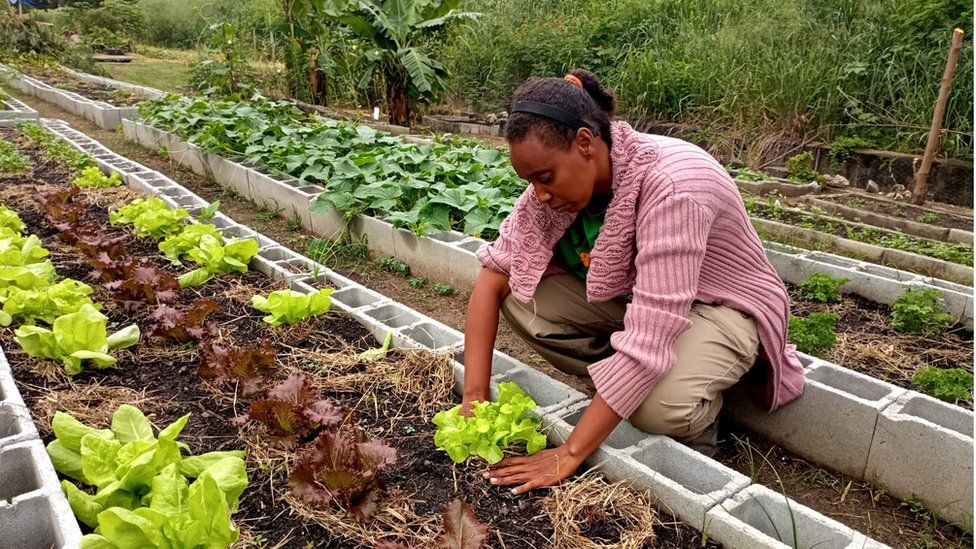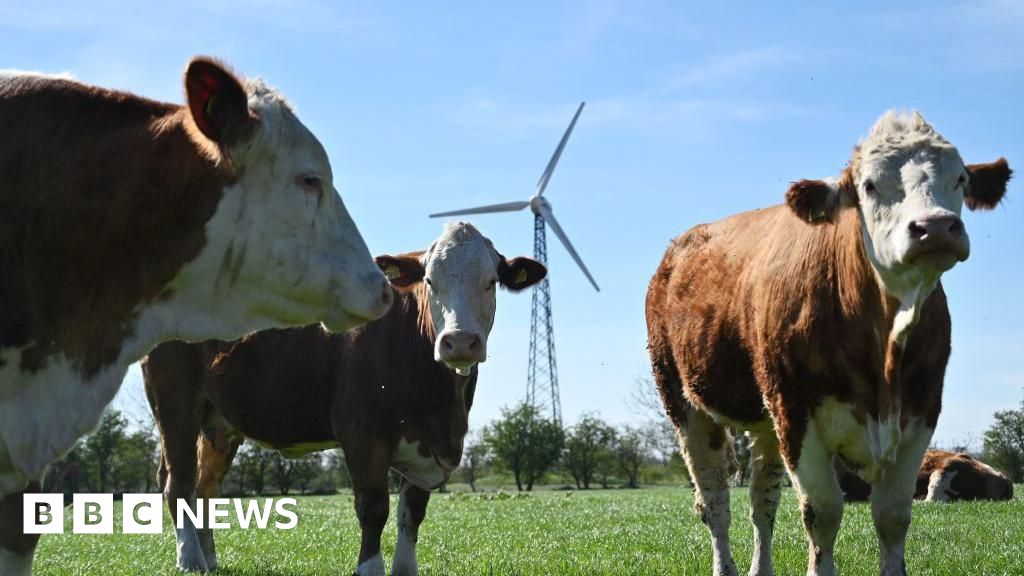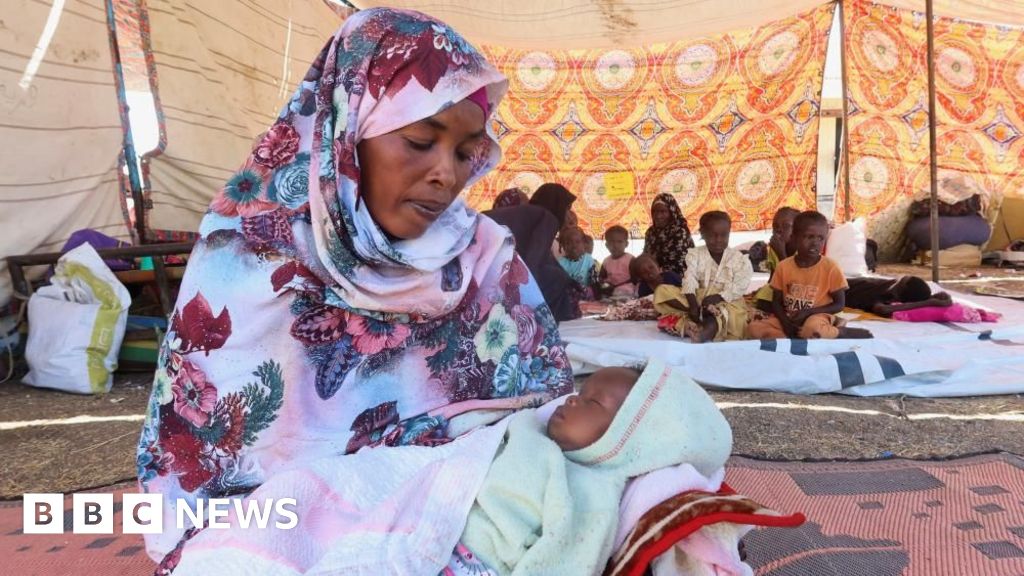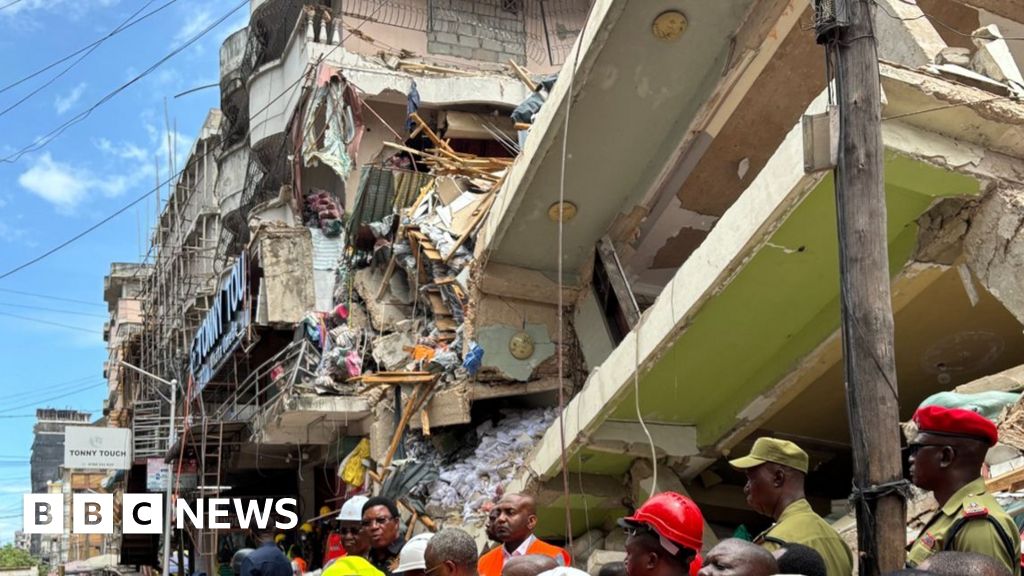ARTICLE AD BOX
By Ana Ionova
Rio de Janeiro

Fernanda da Silva earns a monthly stipend of $95 working in the urban garden
Not too long ago, Fernanda da Silva was going hungry, like millions of other Brazilians.
The 40-year-old mother of three was out of work and money was tight. Her husband's monthly earnings as a doorman - 1,300 reais ($250), just over a minimum salary - kept their family afloat. "It was really difficult for us," recalls Ms. Silva. "I had no income, I was hungry."
Then, just over a year ago, Ms. Silva started planting fresh produce on a patch of land not far from Cajueiro, the Rio de Janeiro favela where she lives, as part of an ambitious project aiming to create the world's largest urban garden.
An urban garden in Rio de Janeiro that is part of an ambitious project to tackle hunger crisis
Now, Ms. Silva puts her green fingers to use - along with 34 other gardeners - in exchange for a monthly stipend of 500 reais ($95, £79) from the city, as well as heaps of fresh food that she can take home at no cost.
"I bring home healthy food to put on the table for my children," she says as she crouches among the vibrant rows of lettuce, beetroot, cassava and carrots, and tugs on the occasional weed.
But the garden's impact has reached much further too, says Ms. Silva. "We are bringing food to the tables of many people."
The community garden is expected to grow food for 50,000 families, every year
World's biggest urban garden
The idea behind the community garden is to generate an income for people in nearby favelas, such as Ms. Silva, while also helping feed vulnerable residents. Once it's completed, it should grow food for some 50,000 local families every year, starting in 2024.
The garden is tucked in a working-class area of Rio de Janeiro, on a plot of land that was once a 'quilombo' - a settlement founded by enslaved Africans who escaped their captors. In the run-up to the Rio Olympics, around 900 families were expelled to make way for a manicured park where spectators could watch the games.
A small slice of this park is now being transformed into an urban garden. An area the size of a football field is already complete, and it is expected to expand more than tenfold - to 110,000 square metres (27 acres) - by the end of the year.
Half of the production will be donated to favela residents in need, while the rest will be sold at a fair price, with earnings split among the gardeners, says Júlio César Barros, a soil and crop expert employed by the city, who is leading the project.
"We wanted to show it's possible to grow food within a large urban centre like Rio de Janeiro," he says.
The garden was once a settlement founded by enslaved Africans who escaped their captors
In Brazil, where hunger is surging, urban gardens offer a glimmer of hope.
The Latin American giant once led the global fight against hunger, largely thanks to generous public spending that lifted millions out of poverty. Between 2004 and 2013, it slashed the number of people going hungry by more than half, from 9.5 percent to 4.2 percent of the population.
But a painful recession, coupled with a punishing pandemic and surging inflation, have wiped out those gains. Some 33 million Brazilians - 15.5 percent of the population - are now going hungry, new research by a network of civil society groups that include Action Aid and Oxfam showed this month.
The project has offered an important lifeline at a time when many are struggling to survive, says Luciane Costa, head of the residents' association in the favelas Faz-Quem-Quer and Morrinho.
She hopes the urban garden can inspire communities elsewhere, helping others who are grappling with hunger. "What we're doing here shows what's possible… And I hope we can set an example for others too."
For Ms. Silva, the gardener, the experience has already been life-changing.
"It has brought me such joy to come here and be part of this - to do what I love, which is to work with the soil, to plant," she says. "It's been a really special opportunity for me."

 2 years ago
46
2 years ago
46








 English (US)
English (US)